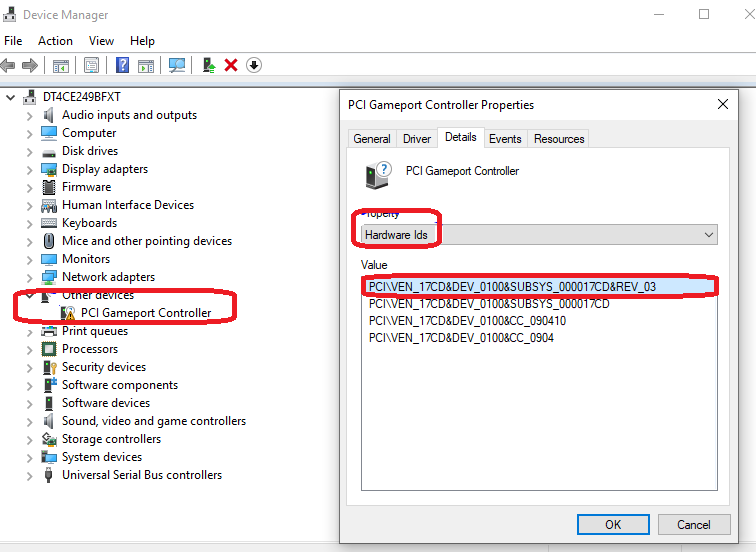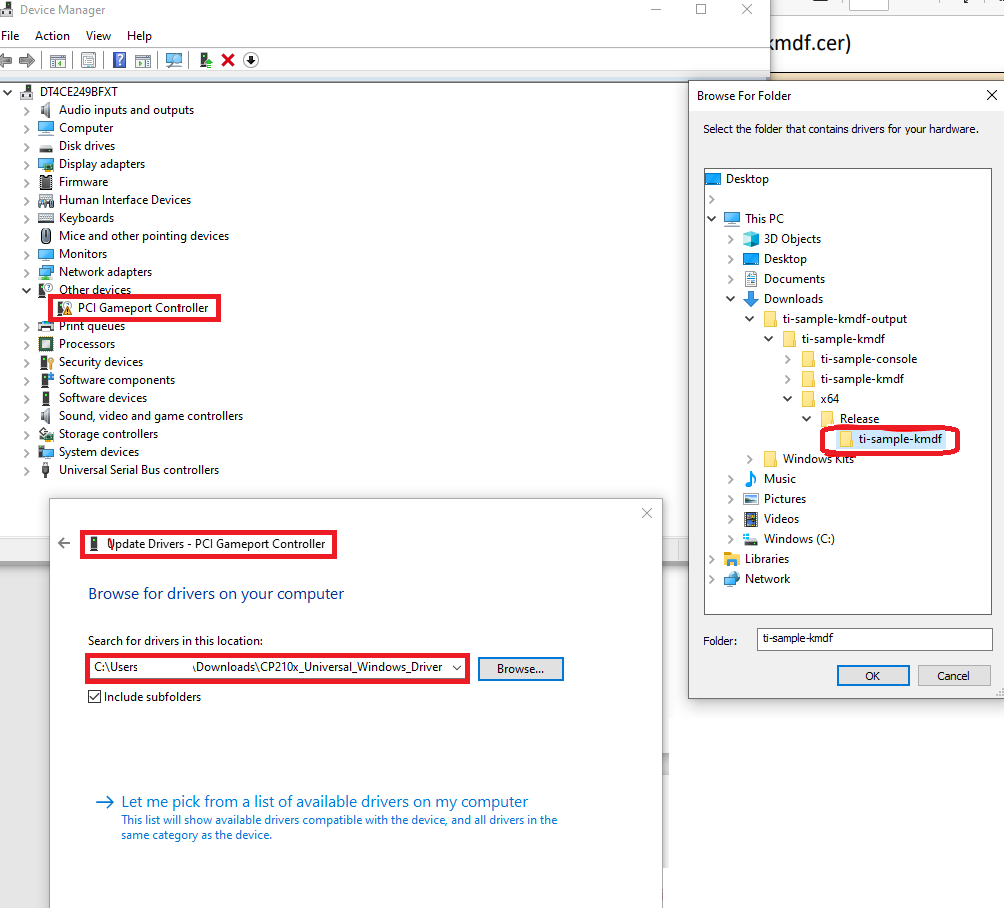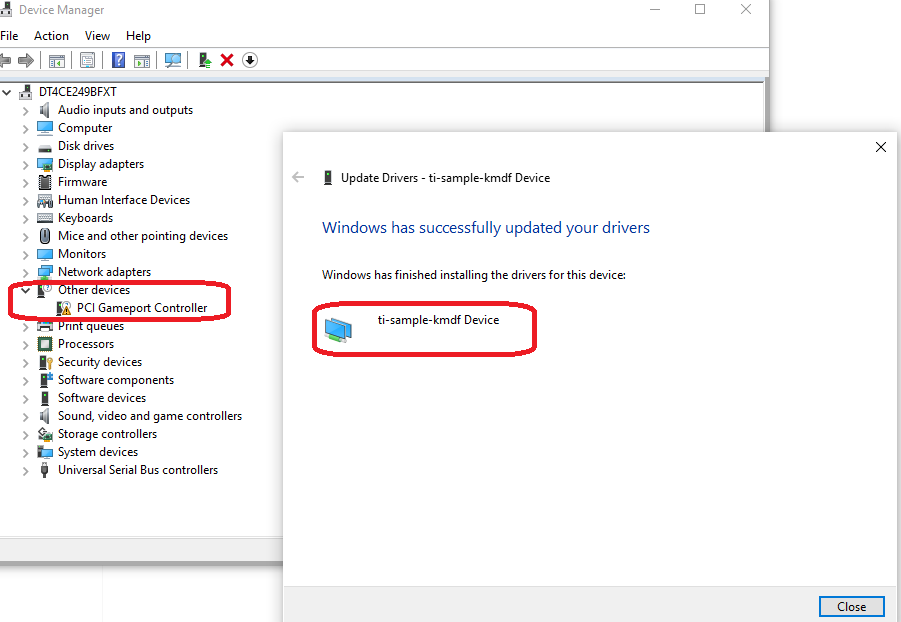SPRADH9 June 2024 AM6442
- 1
- Abstract
- Trademarks
- 1Abbreviations
- 2Introduction
- 3X86 as RC and AM64x as EP
- 4Test Setup
-
5PCIe Test Specification
- 5.1 Identification and Configuration Functionalities
- 5.2 Reference Clock Functionalities
- 5.3 Inbound ATU and BAR Functionalities
- 5.4 Outbound ATU Functionalities
- 5.5 MSI Functionality
- 5.6 Downstream Interrupt Functionality
- 5.7 Device Power Management State Functionality
- 5.8 Function Level Reset Mechanism
- 5.9 Legacy Interrupt Mechanism
- 5.10 MSI-X Capability
- 5.11 Hot Reset Mechanism
- 6Windows Example Driver Verification
- 7References
4.6.3 Deploying
The following files from the solution’s build output are required on the target machine:
- ti-sample-kmdf.inf
- ti-sample-kmdf.sys
- ti-sample-kmdf.cat
- ti-sample-console.exe
Windows by default only accepts signed drivers. An installation can be modified to accept so-called test signed drivers. The Windows KMDF sample driver ti-sample-kmdf uses this approach and is built as a test signed driver.
To allow Windows to use test signed drivers, open an administrator prompt (cmd, Run as administrator) and enter the following command:
Bcdedit.exe -set TESTSIGNING ONEnabling test signing the system needs to be rebooted. At this point the AM24x EVM with the pcie_enumerate_ep application needs to be started as described above.
You then need to install the certificate used to test sign the driver on the target computer. This certificate is placed in the solution output folder along with the driver and is named ti-sample-kmdf.cer.
It can be installed using the CertMgr.exe tool that comes with the WDK from an administrator prompt:
- cd C:\Program Files (x86)\Windows Kits\10\bin\10.0.19041.0\x64\
- CertMgr.exe /add ti-sample-kmdf.cer /s /r localMachine root /all
- CertMgr.exe /add ti-sample-kmdf.cer /s /r localMachine trustedpublisher
- Use full path to ti-sample-kmdf.cer
- PCI device and verify the hardware ID is PCI\VEN_17cd&DEV_0100. Right-click the device




Windows installs the driver and then notifies you when finished installing the driver for the ti-sample-kmdf device.